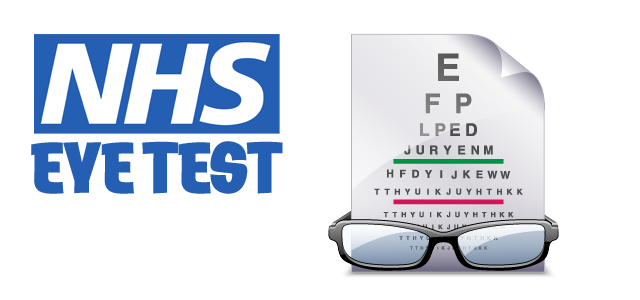![]()
Jack Brown Eyecare, Edinburgh Opticians.
Email: info@jbeyecare.com
Jack Brown Eyecare Branches
30 Elder Street, Edinburgh EH1 3DX
Tel: 0131 557 3531
Open in Google Maps
Westside Plaza, Edinburgh EH14 2SW
Tel: 0131 442 2333
Open in Google Maps

If we think of the eye as a hollow, fluid-filled, 3-layered ball, then the outer layer is the sclera, a tough coat, the innermost is the retina, the thin light-gathering layer, and the middle layer is the Uvea. The Uvea is made up of the iris, the ciliary body and the choroid. When any part of the urea becomes inflamed then it is called Uveitis.
A big problem, when trying to understand Uveitis, for patients and doctors alike, is that there are many different types of Uveitis. This is because:
- The Uvea is made up of different parts. So if the iris is affected, the condition and its treatment could be totally different to when the choroid is affected.
- The inflammation in the Uvea very often affects other parts of the eye such as the retina and so a variety of other problems can be present to complicate the picture.
- Next there are a large number of medical conditions where Uveitis is a feature amongst the other symptoms of the disease. e.g. Behcet's Disease, Sarcoidosis and Toxoplasmosis, to name just three of them.
- There are many different types of causes of Uveitis [see under Causes].
The term intraocular inflammation is often used to cover the spectrum of uveitis conditions. As there is this wide variety of different conditions and complications, it follows that there are numerous ways that it presents itself. The degree and type of visual impairment and the type of treatment may vary considerably from patient to patient. Although the potential for confusion sounds high, as long as it is remembered that Uveitis is actually a number of different conditions, then it is possible to find out about your own particular case. It is, of course, very important, for both patients and doctors, to establish the exact type of Uveitis that exists, as far as it is possible, early on.
What causes Uveitis?As just suggested, there are a number of quite different types of causes of Uveitis:
- It may result from an infection such as a virus (e.g. herpes) or a fungus (e.g. histoplasmosis).
- It may be due to a parasite such as toxoplasmosis.
- It may be related to Autoimmune Disease (with or without involvement of other parts of the body). This, essentially, is when our immune system recognises a part of our own body as foreign (albeit a small part, like one type of protein).
- Trauma to the eye, or even the other eye in the past, can lead to Uveitis.
- In many cases the cause is said to be unknown. This may well mean that the Uveitis is of the autoimmune type. The word "idiopathic" may often be used to describe this group.
Another important way of classifying the different types of Uveitis is by describing the part of the eye that is affected. Very simply, there may be:
- Anterior Uveitis This affects the front of the eye, normally the iris (iritis) or the ciliary body (iridocyclitis). Iritis, strictly speaking is an older term for Anterior Uveitis but is still used frequently. Iritis is by far the most common type of Uveitis and also the most readily treated. Having said that, iritis is something that needs quite close monitoring because complications such as raised eye pressure and cataracts can occur.
- Intermediate Uveitis This affects the area just behind the ciliary body (pars plana) and also the most forward edge of the retina. (See the diagram above). This is the next most common type of uveitis.
- Posterior Uveitis This is when the inflammation affects the part of the uvea at the back of the eye, the choroid. Often the retina is affected much more in this group. The choroid is basically a layer rich in small blood vessels, which supplies the retina.
Tests and examinations
Because of the quite diverse types of causes of Uveitis and also due to the many other medical conditions associated with it, then you can expect to receive a number of tests and thorough questioning. All these are straightforward and painless enough but may seem far removed from your eye problem, e.g. back X-rays, but as said before, it is important to establish the correct type of Uveitis so that the best treatment can be planned.
The treatment of Uveitis aims to achieve the following:
- Relief of pain and discomfort (where present)
- To prevent sight loss due to the disease or its complications
- To treat the cause of the disease where possible.
Like the varied nature of uveitis, the treatment of it may differ from case to case quite considerably. Corticosteroids are often the mainstay of treatment but now are, importantly, being joined by some other newer drugs, usually used along with the steroids. Various eye-drops are used, particularly to treat anterior uveitis.
What will happen to my eyes (prognosis)?
This, once again, varies considerably, but there is a growing confidence, especially with the newer drug treatments, that the eyesight can be stabilised over the long term. Uveitis as a disease should be regarded as incurable in the sense that it will never completely go away, but that is not to say that it cannot be controlled.
Would you like to find out more about Uveitis?
The group aims to provide information to those suffering from or interested in uveitis, in the form of leaflets, regular newsletters and by phone. It also helps people to contact other sufferers.
The Uveitis Information Group
South House
Sweening
Vidlin
Shetland Isles ZE2 9QE
Tel: 01806 - 577310
e-mail: info@uveitis.net
website: www.uveitis.net
text size >












